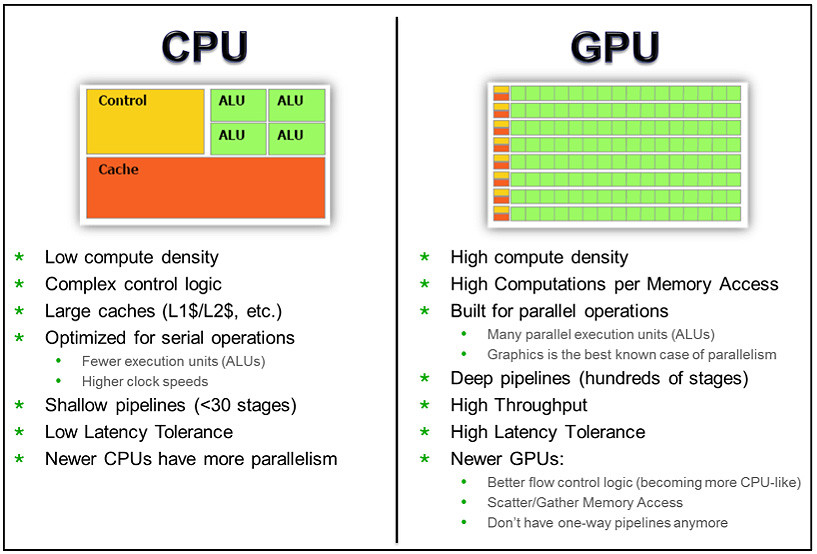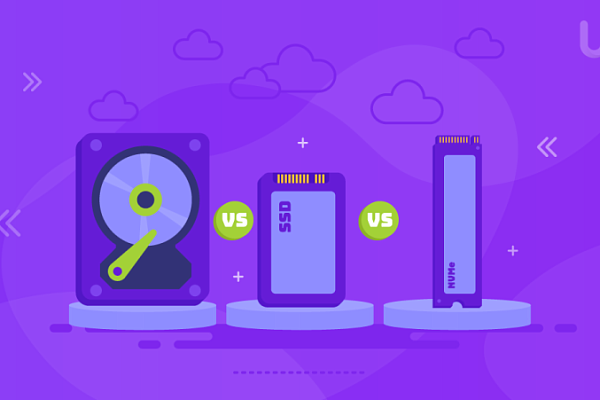For the information systems, it is increasingly difficult to cope with ever-increasing volumes of data. GPU servers are the answer to this challenge. These are the systems equipped with one or more graphics processing units. Such servers are designed for rendering, training artificial intelligence, mining, and other resource-intensive tasks.
What is virtual GPU (vGPU)
vGPU server is a computing resource that combines the power of virtualization and graphics accelerators. With its help, users perform resource-intensive tasks remotely, gaining high performance and easy access to graphics resources. The technology is based on the use of physical graphics cards on the server or virtualization of graphics resources at the software level.
The opportunity to run graphical applications on a remote server is popular among organizations working with large amounts of data. Renting a GPU-accelerated cloud server helps reduce hardware and maintenance costs as well as makes it easier to manage the infrastructure.
CPU vs. GPU: What is the Difference?
Why not use standard servers with CPUs? The point is that they have a different way of thread processing operations because of the specific functionality of each of the processors. CPU operations can only be executed sequentially. One task starts executing after another task has finished. There is a prioritization system for more important processes, but they will still be queued. Any error that occurs while executing a particular task will stop the entire operation.

Each process is processed in a core. Modern video cards such as Tesla M40 GPU have more than one core, i.e. several tasks can be processed in parallel, yet the thread is still sequential in one core.
The principle is completely different when it comes to GPUs. The processor consists of a large number of cores combined into blocks, and operations within these cores are performed in parallel. Consequently, multiple computations can run simultaneously, and if an error occurs somewhere, it does not affect the entire operation. This means that GPU performance is much higher than that of CPUs.
Access to memory is also different. GPU does not require a capacious memory, data writing and reading are separated into a separate process.
How does a GPU work?
The GPU-accelerated server is based on virtualization technology, which allows efficient use of graphics resources of physical hardware to run graphics-intensive applications on virtual machines. The operation of a server with GPU is as follows:
- Physical graphics card: A physical server has one or more powerful graphics cards installed.
- Hypervisor: The physical hardware runs a hypervisor that manages resource virtualization. A hypervisor such as OpenStack, VMware vSphere, or Microsoft Hyper-V creates and manages virtual machines (VMs) on the physical server.
- Virtual Machines: Users create virtual machines using the hypervisor. These virtual machines have access to dedicated or virtualized graphics resources.
- Graphics driver and API: Each virtual machine has a special driver installed inside it that enables interaction between the VM and the physical graphics card. Graphics APIs such as OpenGL or DirectX are also used to provide graphics support to applications.
- GPU Virtualization: GPU virtualization technologies such as NVIDIA GRID or AMD MxGPU can be used to share physical video card resources among multiple VMs. Thus, multiple VMs can simultaneously use graphics resources while being isolated from each other.
- Launching applications for graphics: Users can install and run applications on their virtual machines just as they do on a local PC. The virtual machine sends requests for performing graphic tasks to the physical video card through the driver and API.
- Processing and visualization: The physical card processes graphics, and then sends the results back to the virtual machine for visualization. This allows users to interact with the graphical elements of the applications.
- Isolation and resource management: The hypervisor manages virtual machine access to graphics resources, providing isolation as well as even distribution of computing capacities.
- Monitoring and management: Administrators can monitor graphics resource usage, configure virtual machine settings, and manage compute resources.
Benefits of Virtual GPU
High performance. This is a key advantage for compute-intensive tasks and working with graphics. This is especially important for tasks such as 3D rendering, machine learning, and scientific computing. The GPU is at least 8 times faster than the CPU.
Stability. Systems are stable even under heavy loads. Infrastructure runs without disruption or downtime.
Time and resource-saving. Using GPU-accelerated virtual servers eliminates the need to purchase and maintain expensive physical video cards. This saves the company time and resources.
Scalability. GPU servers are easily scalable. You can increase the amount of resources depending on your current needs.
Individual configuration. You can select resources based on a company's requirements. Also, there is an opportunity to pay only for actually consumed resources.
High availability. You can access the server from anywhere with an Internet connection. It makes them convenient for remote working and collaboration
DDoS attack protection. The rented servers feature basic DDoS protection, keeping your data safe from leakage.
What is vGPU Used for?
GPUs were primarily designed to work with graphics-intensive applications. But thanks to their high performance, they excel in complex computing, machine learning, and more.
GPU servers are used for the following tasks:
-
Graphic design: Designers can use the service to perform complex image processing tasks, 3D modeling, design, and video rendering;
-
Machine Learning and Artificial Intelligence. Researchers and engineers can train deep neural networks, and perform complex machine learning computations.
-
Game Servers: Online gaming companies can build high-performance game servers to provide a superior gaming experience.
-
Scientific research: Educational and scientific centers use GPU-accelerated servers for computationally intensive data modeling and analysis. With vGPU they perform calculations for scientific research, statistical calculations, create predictive models;
-
Cryptography and cryptanalysis. GPUs can be used in cryptography and cryptanalysis to perform various computational tasks for data encryption and decryption, as well as for analyzing cryptographic algorithms and keys;
-
Mining and blockchain. GPUs are widely used for cryptocurrency mining because mining involves performing complex computational tasks.




